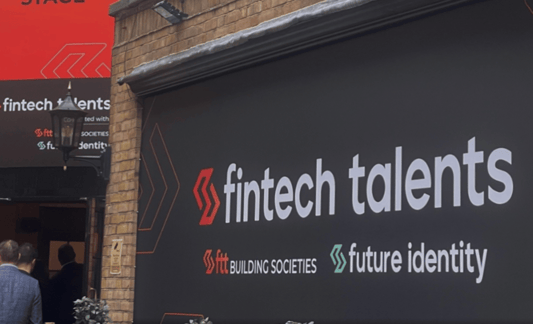
Fintech Talents Festival takes place in London every November for two days and it is considered one of the top events in the Fintech capital.
It is obvious that we are back in physical events for good and the venue in the old brewery in central London helped to make the experience more intimate and relaxed. Most of the exhibitors were fintech vendors, all gathered on the central festival floor, while the six stages were scattered on different levels around.
A large percentage of the exhibitors were related to digital identity/onboarding/KYC. This is a key area for the future of finance, as it is foundational for open banking/open finance/open data.
At Printec, we are interested in maintaining our position at the forefront of the sector, exploring potential partnerships in the future, since the ecosystem is becoming increasingly more open and collaborative.
Digital Identity
Digital Identity is a key element of the open finance ecosystem as it fosters financial inclusion and opens partnership opportunities. One major challenge is how consent is captured at various stages of the user experience and how can we create a proactively safe environment. Think of a “dark alley” in the physical world. Would you dare to enter? How do we make the equivalent of that in the digital world? How can we make the users act like this? Levels of fraud have significantly increased, as there is more pressure for quicker and frictionless experience in the payment ecosystem, creating more opportunities for fraudsters. To protect the users we could apply AI/ML, and also use advanced biometrics and behavioral analysis.
Embedded Finance
Embedded finance exists when you have a payment in the process of a non-financial player, and it is a vast opportunity. In other words, it happens when a financial component is added in slices to life eg. BNPL when you buy a TV online or when you buy a house. There is lots of friction in the corresponding banking model and a high level of inconsistency, so we need to “be careful what we are embedding on”. For embedded finance to work we need interoperability and to provide a consistent experience. Stability is the #1 factor. Regarding BNPL, which is just the tip of the iceberg, with higher inflation and interest rates, the repayment periods will decrease, and the commissions will increase. If it is cheaper than a credit card it will continue to grow.
Big Data and Metaverse
There is a need to aggregate data in one place (enterprise data warehouse) acquiring more data from external sources combined with the internal data. Some regulators demand diversifications of risk in different cloud providers. Data have an operational value, risk management value, and value via monetarization and there is a significant opportunity for data productization with a focus on environmental issues.
Metaverse has experienced growth for the past years with 170 different platforms being created mainly around three themes: games, eCommerce, and social. On the other hand, there are still many risks and challenges: architecture/UX/infrastructure is not there yet, wallets don’t have a clear winner, there is no interoperability, and lots of different blockchains exist. We are in a very early stage and with a very clunky experience.
Open Finance
Open finance is the major theme of the last 50 M&A deals in UK while there are around 5 million open banking end users. At this stage, it seems that there are too many players competing for a limited number of banking clients. The trend will be consolidation, openness to collaboration, and the fact that banks will be back at the forefront. Another top trend is VRPs (Variable Recurring Payments) which puts the customer in control. All in all, we confirmed that we are moving from open banking to open finance to open data.







